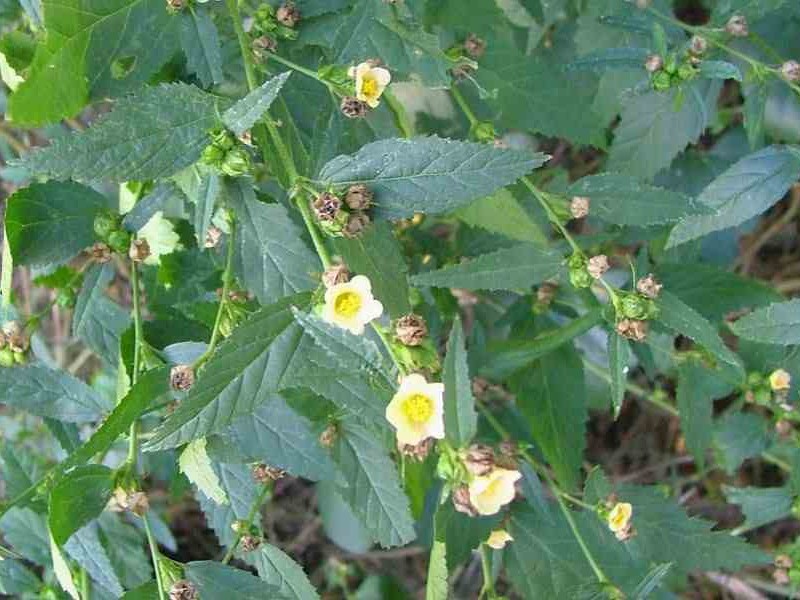
Spinyhead Sida
Spinyhead Sida is widely naturalised throughout the northern parts of Australia. It is most common in the coastal regions of central and northern Queensland and in the northern parts of the Northern Territory. Relatively common throughout the northern regions of Western Australia and other parts of northern Queensland. Also recorded in other parts of the Northern Territory, in south-eastern Queensland, in the coastal central districts of New South Wales and on several offshore islands (i.e. Norfolk Island, Christmas Island and the Cocos Islands).
A weed of tropical, semi-arid and occasionally also sub-tropical and warmer temperate regions. It invades open woodlands, pastures, waterways (i.e. riparian vegetation), plantations, crops, gardens, disturbed sites, roadsides and waste areas.
A long-lived herbaceous plant or small shrub growing 30-150 cm tall with slender, but tough, stems. Its yellowish-green leaves are usually elongated in shape with toothed margins and sharply pointed tips. The flowers (1-2 cm across) are borne singly or in small clusters in the leaf forks on short stalks. These flowers have five yellow petals (6-9 mm long) and five sepals. Its fruit (2-6 mm across) break up into 5-8 wedge-shaped segments when mature. These one-seeded segments are topped with two sharp spines (0.5-1.5 mm long).
